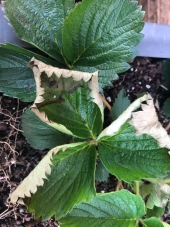




 1
1




Trying to achieve self-reliance on a tiny suburban plot: http://gardenofgaladriel.blogspot.com








Check out Redhawk's soil series: https://permies.com/wiki/redhawk-soil








Blake Wheeler wrote:Also, as the tree leafs out and extends its canopy the shading would probably result in little to no quality berries anyway
 1
1





 2
2




List of Bryant RedHawk's Epic Soil Series Threads We love visitors, that's why we live in a secluded cabin deep in the woods. "Buzzard's Roost (Asnikiye Heca) Farm." Promoting permaculture to save our planet.

|
It was the best of times. It was the worst of times. It was a tiny ad.
A rocket mass heater heats your home with one tenth the wood of a conventional wood stove
http://woodheat.net
|

